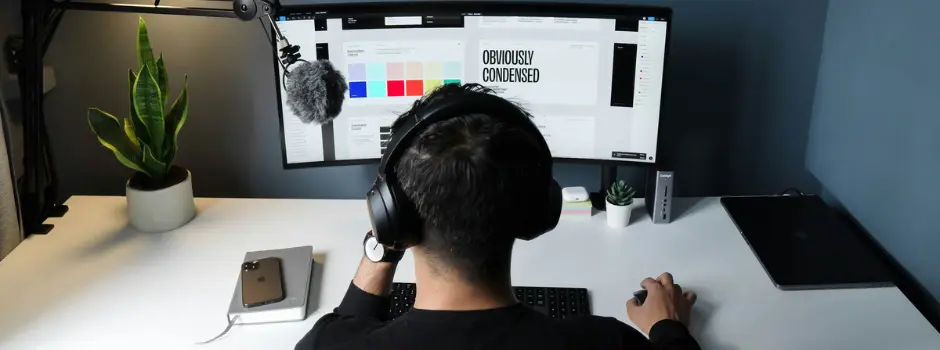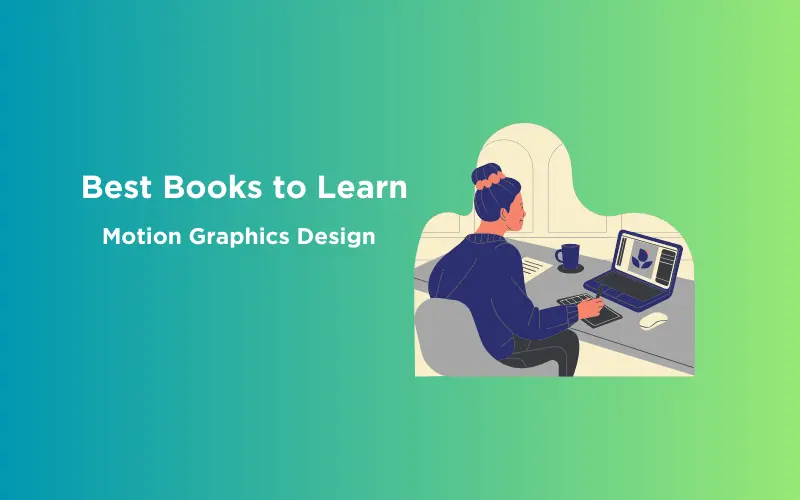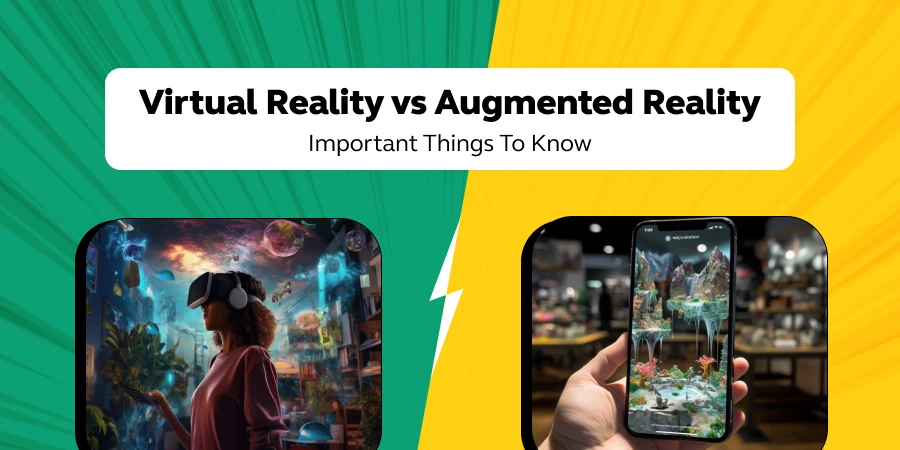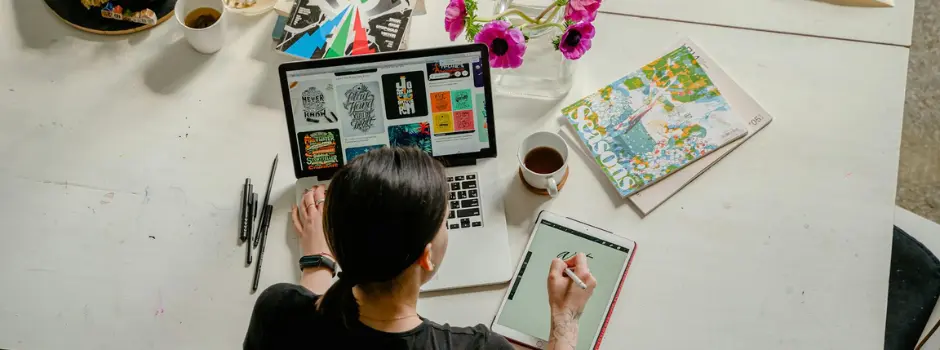
From Pixels to Problems: 15+ Notable Challenges in the Graphic Design Industry
Oct 07, 2025 6 Min Read 12201 Views
(Last Updated)
The graphic design industry is a pivotal element of the creative sector, which plays a crucial role in shaping visual communication, brand identity, and user experiences across various platforms. This industry is characterized by its dynamic nature, continuously evolving with technological advancements, changing market demands, and shifting cultural landscapes.
Despite its vibrancy and creativity, the field is not without its challenges. These hurdles vary from technological changes to client relations, creativity pressures, economic constraints, and social responsibilities. Understanding these challenges is essential for fresh graduates, students, working professionals, and graphic design agencies aiming to navigate the industry effectively.
In this opinionated piece, we will explore some of the key challenges in the graphic design industry, along with some of our suggested solutions on how to face them head-on. So without wasting any more words, let’s dwell in.
Table of contents
- The Rapid Pace of Technological Advancements
- New Tools and Software
- The Rise of AI and Automation
- VR and Augmented Reality
- Being a Graphic Designer, How do I handle this rapid technological advancement?
- Client Relations and Market Dynamics
- Navigating Client Expectations
- Staying abreast of market shifts
- Creative Resilience: Overcoming Blocks and Burnouts
- The Curse of Creative Block
- The Balancing Act: Innovation vs. Market Demands
- Ethics and Social Responsibility in Design
- Cultural Sensitivity and Inclusivity
- Copyright, Plagiarism, and Originality
- Ethical Practices in Graphic Design
- Final Words - Challenges in the Graphic Design Industry
- FAQs
- How Can Graphic Designers Stay Ahead of Technological Advancements?
- What Strategies Can Freelance Graphic Designers Use to Find and Retain Clients?
- How Can Graphic Design Agencies Balance Creativity and Business?
The Rapid Pace of Technological Advancements
The graphic design industry, like many others, is at the mercy of ceaseless technological shifts, with designers standing at the confluence where creativity meets the digital wave. As the tools of the trade evolve, so do the expectations and workflows within the design community.
New Tools and Software
One of the most significant developments in recent years is the proliferation of sophisticated software options, which have expanded the horizons of what is possible in graphic design. Adobe Creative Cloud continues to set industry standards with Photoshop, Illustrator, and InDesign, but they are no longer the only key players.
Must Read: 10 Must-have Skills for a Motion Graphics Designer in 2025
Affinity Designer, Sketch, and Figma have entered the arena, each offering unique features and subscription models that appeal to different segments of designers. These new contenders enable more specialized work, such as UI/UX design, and allow for real-time global collaboration, breaking down previous geographical barriers to teamwork and client interaction.
Must Explore: Top 11 UI/UX Design Tools for 2025
The Rise of AI and Automation
The advent of artificial intelligence (AI) in graphic design has catalyzed a new era of automation and smart design. AI-driven platforms like Canva and Logojoy democratize design by enabling non-designers to create quality visuals using templated designs that can be tweaked with minimal effort.
For professional designers, AI tools can facilitate tedious processes, such as sifting through vast image libraries for the perfect asset or generating countless iterations of a design layout. These AI enhancements, however, also stir anxiety among designers who fear being replaced by machines that can churn out designs faster and, in some cases, cheaper.
Must Explore: Top 7 Ways To Use AI in UX Design
VR and Augmented Reality
Virtual Reality (VR) and Augmented Reality (AR) have also nudged the boundaries of traditional graphic design. They have unlocked new design domains that transcend the limitations of two-dimensional canvases. Designers are now tasked with creating immersive environments and experiences that engage users in three-dimensional spaces. Projects can range from interactive advertising campaigns to virtual product demos, requiring designers to develop a deep understanding of space, movement, and interactivity.
Also Read: Integrating Augmented Reality (AR) into User Interfaces: Challenges and Solutions
Being a Graphic Designer, How do I handle this rapid technological advancement?
To stay relevant in this tech-driven world, designers must adopt a mindset of perpetual learning. Engaging with online courses, webinars, and tutorials from leading institutions or platforms like HCL GUVI, and LinkedIn Learning can keep one’s skill set sharp.
Subscribing to design blogs, podcasts, and magazines can provide insights into emerging trends and tools. Networking through professional groups and attending industry conferences allows designers to exchange knowledge and learn about new tools and methods firsthand.
Must Explore: The Scope of Motion Graphics in 2025
Designers can use free trials, beta testing opportunities, and open-source software to experiment with new tools without committing significant financial resources. Platforms like GitHub offer a space for sharing and collaboration on projects, which can be an excellent way for designers to get comfortable with coding and understand the intricacies of software development.
Additionally, more graphic designers are embracing coding as a critical skill. Learning the basics of HTML, CSS, and JavaScript not only broadens the range of services they can offer but also facilitates better communication with developers, enabling a more cohesive approach to web design projects.
ALSO READ | Top YouTube Channels to Learn Motion Graphics
Client Relations and Market Dynamics
The complexities of the client-designer relationship in the graphic design industry are often fraught with communication barriers and divergent expectations. A successful project outcome hinges on the designer’s ability to effectively navigate these challenges, which can be as critical as the technical skills of the design itself.
Navigating Client Expectations
Effective communication forms the foundation of every client-designer relationship. A common hurdle is the translation of a client’s vision into a visual design that aligns with their expectations. It’s not uncommon for clients to have vivid ideas in their minds but find it challenging to articulate their thoughts clearly. This communication gap can lead to multiple revisions and frustration on both sides.
Designers, therefore, must develop active listening skills and ask probing questions that elicit the client’s preferences and goals in detail. It’s beneficial to use visual aids and mood boards during initial meetings to help clients better express their desires and set a clear direction.
Another aspect of client relations is managing expectations from the outset. Graphic designers need to establish realistic timelines, and deliverables, and be transparent about what is feasible within a given budget and timeframe. Setting these expectations early can mitigate scope creep—the tendency for a project’s requirements to increase over its lifecycle—which often leads to strained relationships and work overload.
Also Find Out Motion Graphics Designer Salary in 2025: Trending Now
Staying abreast of market shifts
Adapting to market shifts is also essential for maintaining robust client relationships. As trends and technologies evolve, clients’ needs change. Designers must be observant of these shifts and advise clients on how new design approaches can benefit their brand or project.
It’s not just about keeping pace with design trends but also understanding broader market dynamics, such as changes in consumer behavior or advancements in digital platforms, and how these factors can impact design choices.
In dealing with diverse clientele, graphic designers often encounter varying levels of design literacy. Some clients may not understand the intricacies of design work and why certain decisions are made. Educating clients about the design process and the strategic thinking that underpins design choices can foster a greater appreciation for the designer’s work and pave the way for more productive collaboration.
When clients understand why a specific font, color, or layout was chosen, they are more likely to trust the designer’s expertise and judgment.
Must Read About Top UI/UX Design Trends: Embracing Innovation in 2025
Creative Resilience: Overcoming Blocks and Burnouts
Graphic designers frequently find themselves in a paradoxical situation, needing to fuse imaginative exploration with the rigid constraints of deadlines and client expectations. The ability to stay creative under pressure is not just a desirable skill but a necessary one to thrive in the industry.


The Curse of Creative Block
Creative block is a common issue that can hinder a designer’s ability to generate innovative ideas. Overcoming this obstacle often requires stepping back from the project, seeking inspiration from diverse sources, and sometimes embracing collaborative brainstorming.
One of the key strategies to maintain creativity despite the ticking clock is effective time management. Designers who master the art of scheduling and prioritizing can carve out pockets of time specifically dedicated to creative thinking.
By breaking projects into manageable tasks and setting clear milestones, a designer can focus on one aspect of the project at a time, reducing the overwhelm that often stifles creativity. For example, setting aside time for brainstorming before delving into the design software can lead to more innovative concepts without the immediate pressure to produce a final product.
Another technique embraced by designers is the Pomodoro Technique, where work is broken down into intervals, traditionally 25 minutes in length, separated by short breaks. These intervals, referred to as “pomodoros,” encourage designers to work with the time they have rather than against it, promoting sustained concentration and creative thinking.
This technique is particularly effective in combatting the fatigue that can come from long periods of design work, helping to keep the mind fresh and receptive to new ideas.
ALSO READ | Role of Motion Graphics in UI/IUX Design.
The Balancing Act: Innovation vs. Market Demands
Sometimes, embracing constraints can be a source of creativity itself. Designers often find that having clear boundaries, be it in the form of a tight deadline, budget, or specific client requirements, can lead to more creative solutions. Constraints force designers to think outside the box and make the most of the resources they have at their disposal.
For example, when tasked with creating a visual campaign with limited graphical elements, a designer might use typography as the main design feature, playing with letterforms to create visual interest, leading to a unique and memorable campaign.
A case in point is the work of renowned designer Paula Scher, who was given just one week to conceive and execute a new logo and identity for Citibank. Scher turned to her extensive experience and intuition to create the iconic, umbrella-encircled “Citi” logo in a matter of seconds. The pressure of the situation facilitated a burst of inspiration that led to a design that has been in use for decades.
Also Explore: Balancing Between Creativity and Functionality in UI/UX Design Projects [2025]
Ethics and Social Responsibility in Design
Graphic designers are cultural communicators whose creations can resonate powerfully within society. Their visual narratives can influence opinions, behaviors, and even societal values. As such, the role of a graphic designer is intrinsically linked to social responsibility, requiring a considered approach to how their work impacts both the immediate audience and the broader community.
Cultural Sensitivity and Inclusivity
One of the most pressing social responsibilities for graphic designers is cultural sensitivity and inclusivity. As the world becomes more interconnected, designers must be attuned to the cultural contexts in which their work will be disseminated.
Ignorance of cultural nuances can lead to inadvertent offense or the perpetuation of stereotypes. Designers must therefore engage in research and dialogue to create visuals that are respectful and inclusive. This requires a willingness to listen, learn, and sometimes, collaborate with cultural consultants to ensure authenticity and avoid cultural appropriation.
Must Explore: Top 9 AI Tools for Content Creation That You Shouldn’t Miss
Copyright, Plagiarism, and Originality
Copyright and plagiarism are additional ethical battlegrounds for designers. In the digital age, where content can be shared and replicated in seconds, respecting the intellectual property rights of others is paramount.
Designers must navigate the legalities of using images, fonts, typography, and other design elements, ensuring that all materials are either original, properly licensed, or fall under fair use. This extends to the proper crediting of collaborative efforts and the avoidance of passing off others’ creative work as their own.
Taking inspiration from other designers is a natural part of the creative process, but there is a clear graphic design industry, like many others, at the mercy of ceaseless technological shifts, with designers standing at the confluence where creativity meets the digital wave. As the tools of the trade evolve, so do the expectations and workflows within the design community.
Ethical Practices in Graphic Design
Ethically, designers are also stewards of truth and authenticity. Their creations should not mislead the viewer or distort reality for the sake of persuasion. This is particularly relevant in industries such as advertising, where the line between embellishment and deception can be thin.
Ethical considerations come into play when representing products or services, requiring honesty in portraying their features, benefits, and potential drawbacks. This extends to avoiding manipulation through images or information, a practice that can harm consumers and tarnish the reputation of both the designer and the brand they represent.
Also Learn Human-Computer Interaction in UI/UX: A Comprehensive Guide on Effective Designing [2024]
Final Words – Challenges in the Graphic Design Industry
In modern essence, the graphic design industry is fraught with challenges that require a multifaceted approach to navigate. Continuous learning, adaptability, strong communication skills, creativity, and an ethical compass are indispensable tools for designers facing these hurdles. By embracing these challenges as opportunities for growth and innovation, designers can carve out successful careers in this dynamic field.
Must Explore: Motion Graphics Designer Resume: 13 Important Tips to Make it Outstanding
FAQs
Graphic designers can stay ahead of technological advancements by dedicating time to continuous learning and professional development. This can include subscribing to industry publications, attending workshops and webinars, participating in online courses, and experimenting with new tools and software.
Networking with other professionals and joining design communities can also provide insights into emerging trends and technologies.
Freelance graphic designers can find and retain clients by building a strong personal brand and online presence, showcasing their portfolio on both personal websites and social media platforms.
Effective networking, asking for referrals from past clients, maintaining positive client relationships through excellent communication, and delivering high-quality work on time are also crucial strategies. Additionally, freelancers should consider niche specialization to stand out in a saturated market.
Graphic design agencies can balance creativity and business by clearly understanding their client’s business objectives and integrating them into the creative process. Establishing effective project management practices and fostering a collaborative work environment encourages creative exploration while adhering to budgets and deadlines.
Additionally, agencies should invest in their team’s professional development to keep skills sharp and creativity flowing, ensuring the delivery of innovative solutions that meet business needs.























Did you enjoy this article?